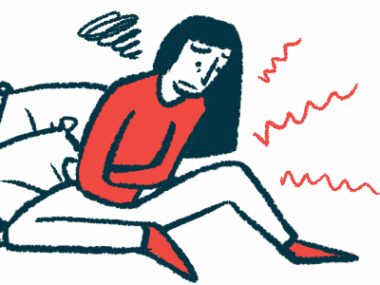Inflammation during menstrual cycle may trigger VOEs: Study
Cyclic variations may contribute to crises, researchers say
Written by |

Women with sickle cell disease (SCD) have markedly elevated levels of C-reactive protein (CRP), a marker of body-wide inflammation, during the first half of their menstrual cycles, and these variations may contribute to recurrent patterns of vaso-occlusive events (VOEs), complications resulting from blood vessel obstruction that include painful vaso-occlusive crises. a study found.
The study, “C-reactive protein and the menstrual cycle in females with sickle cell disease,” was published in Blood Vessels, Thrombosis & Hemostasis.
“The amount of inflammation is significantly elevated in the follicular phase, or first half, of the menstrual cycle in female patients with SCD,” Jessica Wu, MD, the study’s first author and a resident physician at the Perelman School of Medicine at the University of Pennsylvania, said in a press release from the American Society of Hematology, which publishes the journal. “This observation correlates with what we see in the literature, that this is the time in which this patient population has the most VOEs.”
SCD is characterized by the presence of abnormally shaped red blood cells that easily break down (hemolysis) and become lodged inside blood vessels, blocking blood flow. This can cause organ damage and episodes of severe pain throughout the body, which may require hospitalization.
Ongoing hemolysis and blood vessel blockages trigger chronic inflammation that can cause further complications, with exacerbations during VOEs. CRP levels in the bloodstreams of SCD patients tend to be higher than those of people without the condition, and seem to spike during VOEs.
VOEs more common in women
Women with SCD experience more frequent VOEs with more severe pain and more hospitalizations than men, particularly during their reproductive years. Half of SCD women report VOEs at specific times during their menstrual cycle.
“The menstrual cycle is often overlooked in research and clinical care, but can interact with health in important ways, as we are seeing in SCD,” said Andrea Roe, MD, the study’s principal investigator and an assistant professor of obstetrics and gynecology at Pennsylvania Hospital.
Cyclic patterns during menstruation suggest that hormonal changes may influence VOEs. The use of hormonal contraceptives has been shown to ease SCD pain, further supporting a hormonal component to VOEs.
“Many hormonal contraceptives can suppress menstruation or suppress the hormone fluctuations that occur from cycle to cycle, so contraceptives could help these patients manage their pain crises,” Wu said.
Whether CRP varies by sex or fluctuates with the menstrual cycle among women with SCD had not been previously investigated.
“We know both from the literature and anecdotally from our patients that women with SCD have VOEs that cluster around their menstrual periods,” Wu said. “We wanted to examine the potential reason behind that.”
The team analyzed stored blood samples from the Penn Medicine BioBank repository collected from 13 women and 18 men with SCD, aged 18-50. Blood was tested for CRP in all samples and for female sex hormones, including estradiol, progesterone, and luteinizing hormone, in samples taken from female patients. Fluctuating levels of female sex hormones were used to estimate each phase of the menstrual cycle.
Overall, CRP levels did not differ significantly by SCD genotype, use of the medication hydroxyurea, or gender. However, in SCD women, median CRP levels were about 10 times higher during the follicular phase of the menstrual cycle than in the luteal phase (8.80 mg/L vs. 0.82 mg/L).
Higher CRP early in cycle ‘may predispose’ women to VOEs
The follicular phase, the first half of the menstrual cycle, is marked by the thickening of the uterine lining and the growth of follicles, or immature eggs, in the ovaries. In the luteal phase, which occurs after ovulation, the egg travels through the fallopian tubes to the uterus.
There was a trend toward higher median CRP levels among women in the follicular phase when compared with men (8.80 vs. 4.45 mg/L). The inverse was true in the luteal phase, with median CRP levels being lower in women compared with men (0.82 mg/L vs. 4.45 mg/L).
Median counts of platelets (cell fragments involved in blood clotting) were significantly elevated in SCD women during the follicular phase compared with men. Other lab parameters that tended to be higher in women during the follicular phase included immune neutrophil counts, the liver enzyme aspartate aminotransferase (a marker for liver injury), the hormone cortisol, and thrombin-antithrombin complexes (a marker for blood clotting).
“Our results suggest that females have cyclicity in inflammation across the menstrual cycle that may predispose them to VOEs during the follicular phase,” the team wrote. “Further study is needed to validate these findings prospectively and to correlate biomarker patterns with clinical symptoms.”
The study was “the first to examine the association between menstrual cycles and inflammation in female patients with SCD,” Wu said. “SCD is a really debilitating and painful disease. The more data we have about how it presents in female patients, the better we can counsel them on anticipating and managing their pain.”







